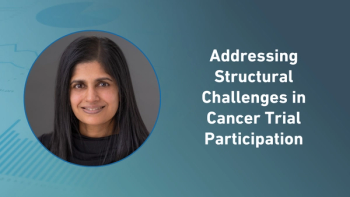
Afib Detection: True or False Due to Bad Quality Recordings
This article discusses atrial fibrillation (Afib) detection and ECG recordings of the arrhythmia.
Atrial fibrillation (Afib) is the most common arrhythmia. According to the Centers for Disease Control and Prevention website, between 2.7 and 6.1 million people in the US have Afib and the incidence increases with age.1 The arrhythmia is associated with a five-fold risk of stroke and a three-fold incidence of congestive heart failure, and higher mortality.2 It is caused by multiple chaotic re-entry circuits in the atria which results in an irregular atrial rhythm and an irregular ventricular rhythm. Atrial fibrillation can occur without a clear cause or can be secondary to cardiovascular pathology or to non-cardiac causes. Atrial fibrillation is classified as follows:3
- Paroxysmal: Afib occurs in episodes and terminates spontaneously within seven days
- Persistent: continuous episodes of Afib that last more than seven days
- Longstanding persistent: continuous Afib with a duration of longer than 12 months
- Permanent: the patient and clinician make a joint decision to stop further attempts to restore and/or maintain sinus rhythm. Acceptance of Afib represents a therapeutic attitude on the part of the patient and clinician rather than an inherent pathophysiological attribute of Afib. Acceptance of Afib may change as symptoms, efficacy of therapeutic interventions, and patient and clinician preferences evolve.
Most patients with paroxysmal Afib eventually develop permanent Afib.
On an electrocardiogram (ECG), Afib is characterized by an irregular rhythm with a rate around 100-160 beats per minute (bpm) but slower if on medication. The atrial rate is typically 300-500 bpm. The QRS duration is usually normal unless there are additional conduction abnormalities and the P waves are not distinguishable as the atria are firing from multiple locations. They are replaced by multiform fibrillatory waves causing the baseline to be undulating (Figure 1).
When recording ECGs in the clinic it is of the utmost importance to collect tracings of the best possible quality since signals with noise and artefact might have the appearance of atrial fibrillation and will be diagnosed as such by the ECG machines. Various publications have shown that not all primary physicians are able to pick up the false interpretation. In a study performed by F. Bogun et al., 24% of the patients who were wrongly diagnosed with Afib by the device algorithm were treated for Afib by the physician who was not able to correct the inaccurate interpretation. This resulted in a change in patient management and initiation of inappropriate treatment, including antiarrhythmic medications and anticoagulation as well as unnecessary additional diagnostic testing.4 Other studies have shown that automated Afib diagnosis does get overruled correctly by physicians.5
When recording a 12 lead ECG it is very important to look at all twelve leads before making a final interpretation. The ECGs shown in figure 2 were labeled as atrial fibrillation by the machine algorithm. Careful review of the tracings, however, shows the presence of P wave prior to the QRS complexes in some of the leads and rules out Afib. Several sources indicate that the inaccuracy of ECG algorithms to detect Afib is around 20%.4,5
When Afib follow up is performed using cardiac event monitors that typically record only one channel it can be even more difficult to diagnose Afib. Figure 3 shows a 16s recording of a 74 year old male patient. The baseline is showing significant artefact mimicking multiform fibrillatory waves. The first 8s show an irregular rhythm, which could be considered to be Afib. Careful review shows regular P waves with constant PQ duration before some of the QRS. These are more visible in the second strip. This patient’s rhythm was therefore considered to be sinus rhythm with conducted isolated atrial premature contractions. In a study performed by M. H. Bae et al., who looked at the underlying rhythm in patients with over-interpretation of Afib, sinus rhythm with atrial premature complexes was the most prominent missed interpretation by the computer algorithm followed by sinus rhythm with artefact.6
To conclude, correct detection of Afib is dependent on good quality recordings. These are important to guide the physician in prescribing the correct treatment to the patients. ECG machines provide an automatic interpretation that should be used as an indication but should not be considered to be the gold standard. ECGs should be over read by physicians who have received the correct training to detect abnormalities like Afib or should be sent to an expert in a hospital or central reading facility.
Luc Dekie, PhD, is the Director of Scientific Affairs, Europe at Biomedical Systems.
References
1
2A. J. Camm et al. 2012 focused update of the ESC Guidelines for the management of atrial fibrillation. European Heart Journal (2012) 33, 2719–2747.
3C. T. January et al. 2014 AHA/ACC/HRS Guideline for the Management of Patients With Atrial Fibrillation: Executive Summary: A Report of the American College of Cardiology/American Heart Association Task Force on Practice Guidelines and the Heart Rhythm Society. J Am Coll Cardiol. 2014;64(21):2246-2280.
4F. Bogun et al. Misdiagnosis of Atrial Fibrillation and Its Clinical Consequences. Am J Med. 2004; 117:636–642
5Davidenko JM, Snyder LS. Causes of errors in the electrocardiographic diagnosis of atrial fibrillation by physicians. J Electrocardiol 2007;40:450–6.
6M. H. Bae et al. Erroneous Computer Electrocardiogram Interpretation of Atrial Fibrillation and Its Clinical Consequences. Clin. Cardiol. 35, 6, 348–353 (2012)
Newsletter
Stay current in clinical research with Applied Clinical Trials, providing expert insights, regulatory updates, and practical strategies for successful clinical trial design and execution.




